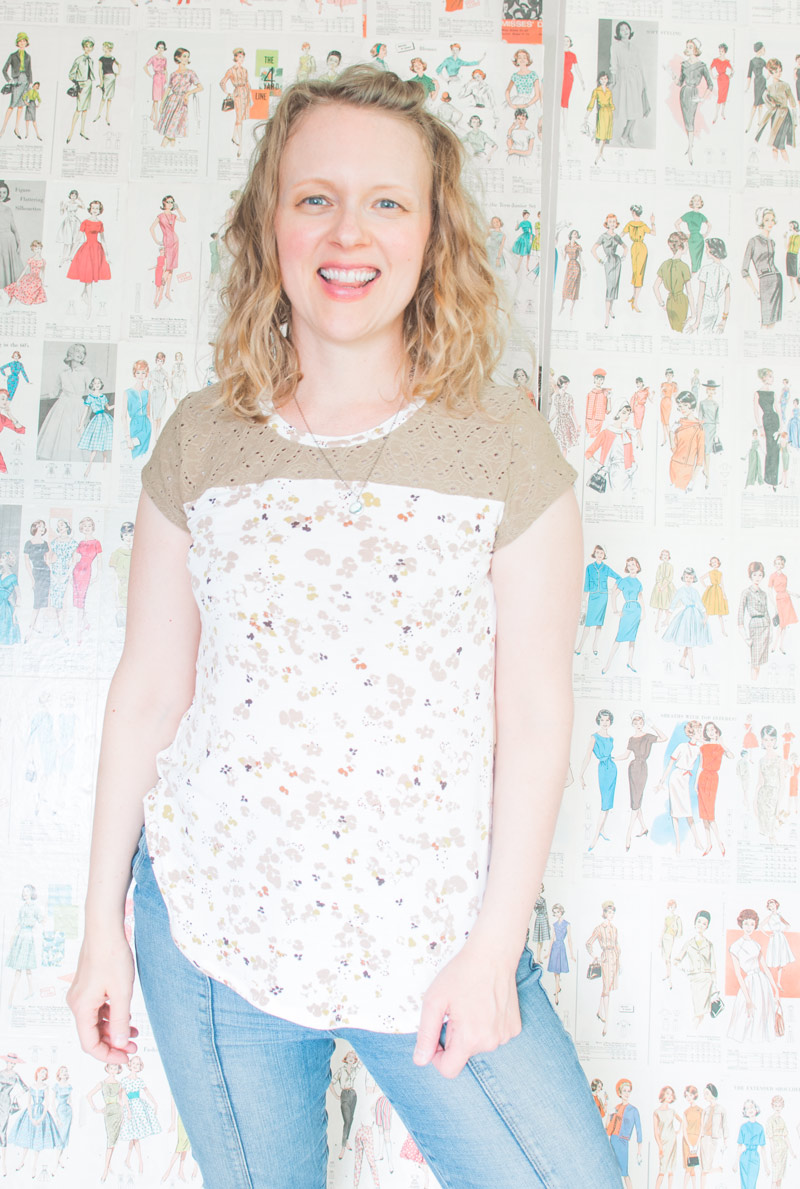Become a pro at colorblocking: How to mix knit fabrics
7/6/22 – This is a guest post by Elizabeth Farr. You can learn more about Elizabeth, as well as more sewing articles, on her blog, Elizabeth Made This.
Have you ever colorblocked a tee or added a little contrast on a knit dress? If you have, you know how much fun it can be to mix knit fabrics together.
With projects like the Ivy Tee, you’ve got a great opportunity to play with texture and color as you mix your knits together.
And if you’re like me and sew a lot of knits, you probably have a bunch of weird leftover bits of knit fabrics waiting for something to do.
Here you’ll pick up some tips for mixing your knit fabrics together by stretch, weight, and color along with some other fun ideas for mixing your knits. Then I’ll give you my best tips for sourcing knit fabrics and the one foolproof way you can always pick the perfect knit fabric combination.
Mix knits by stretch
Making sure that your knits have similar amounts of stretch is the most important consideration.
It’s going to be difficult to use a very stretchy knit like ITY with something that doesn’t have a lot of stretch like ponte.
This floral rayon spandex is very drapey and stretch and pairs reasonably well with the solid lavender poly spandex on the left. On the other hand, it’s far too stretchy to play nice with the orchid sweatshirt tee on the right even though they’re in the same color family.
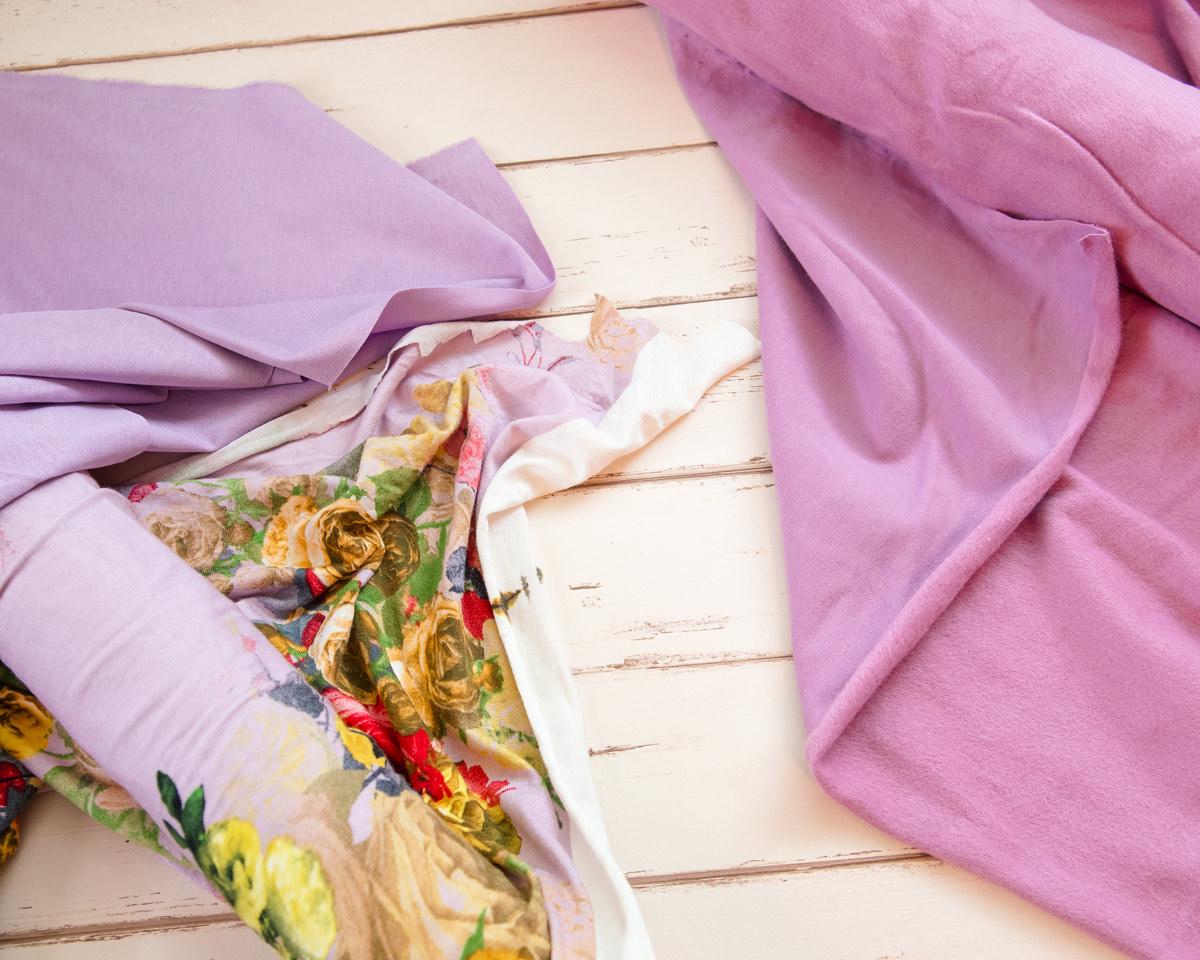
That being said, there are times that you will mix knits with quite different stretch. Often on necklines, and ankle or wrist cuffs you’ll see rib knit called for on a pattern. Rib knits are typically much more stretchy than most knits, but they can be easily sewn into other knits because of how they relax to fit a shape.
How to calculate the stretch amount on a knit
As a general rule, if you’re working on a colorblocked project, check your knits against a ruler. Fold over about 10 cm of fabric in the direction of the stretch. Pull on it to the point that it stretches comfortably. Every cm past the 10 cm mark is 10% stretch. So if your fabric stretches 5 cm past the 10 cm mark, it has 50% stretch.
Check your second fabric to see if it has a similar amount of stretch. If it’s not close, choose another fabric.
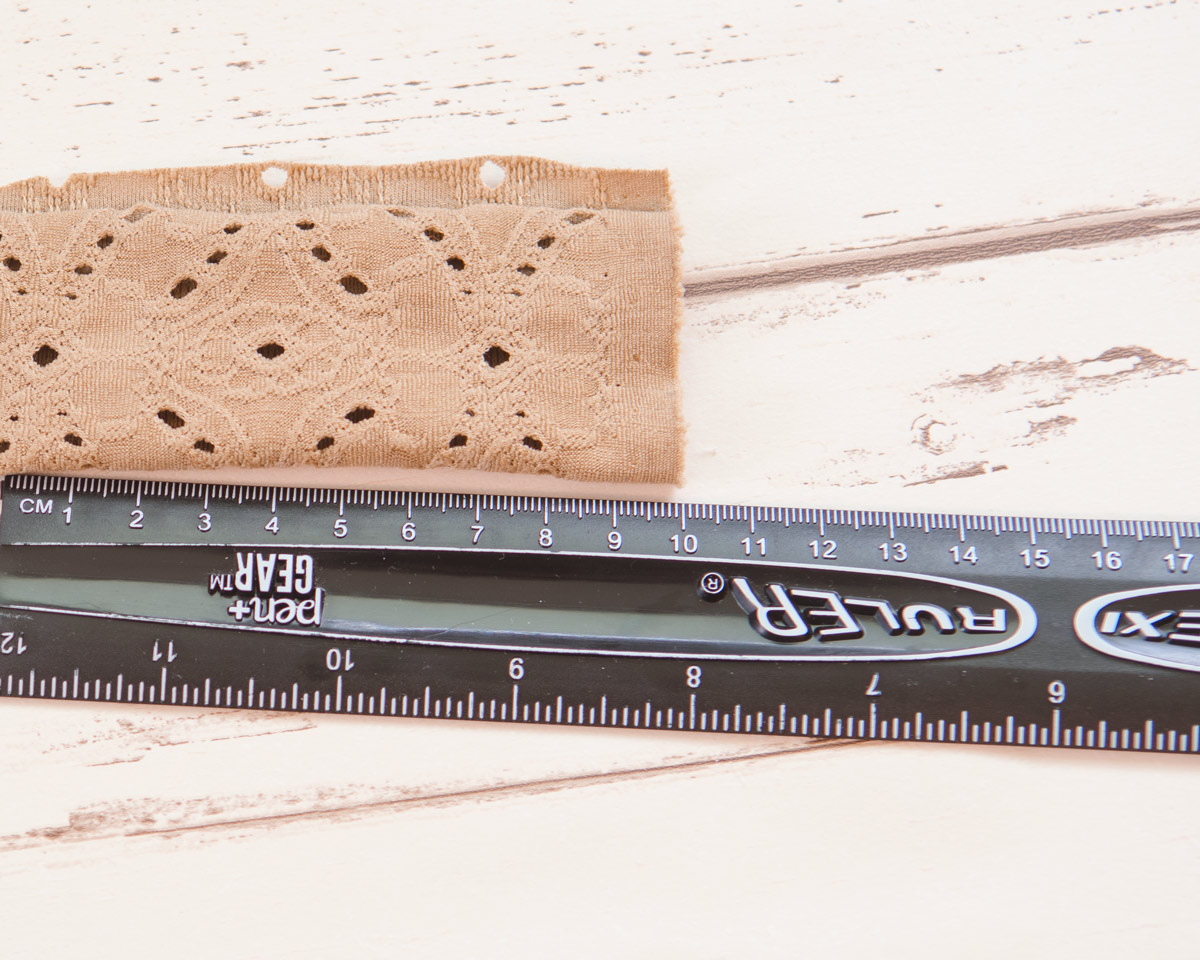
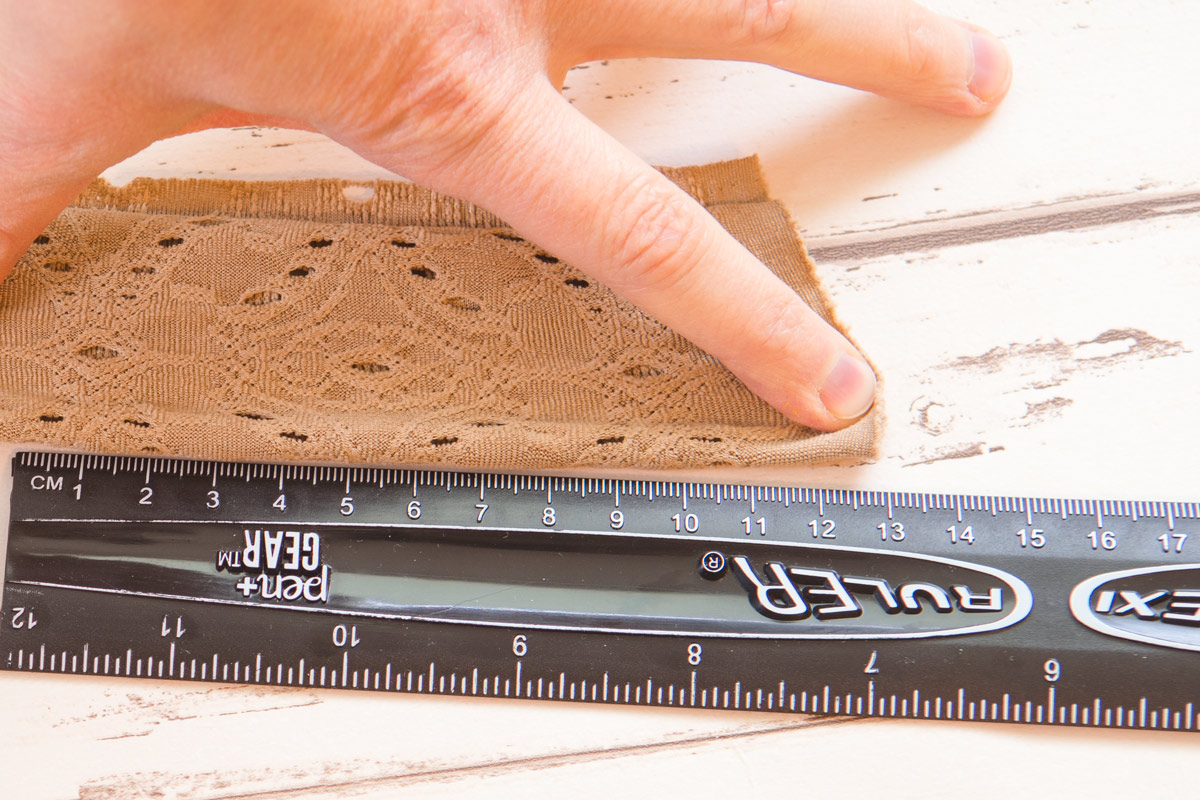
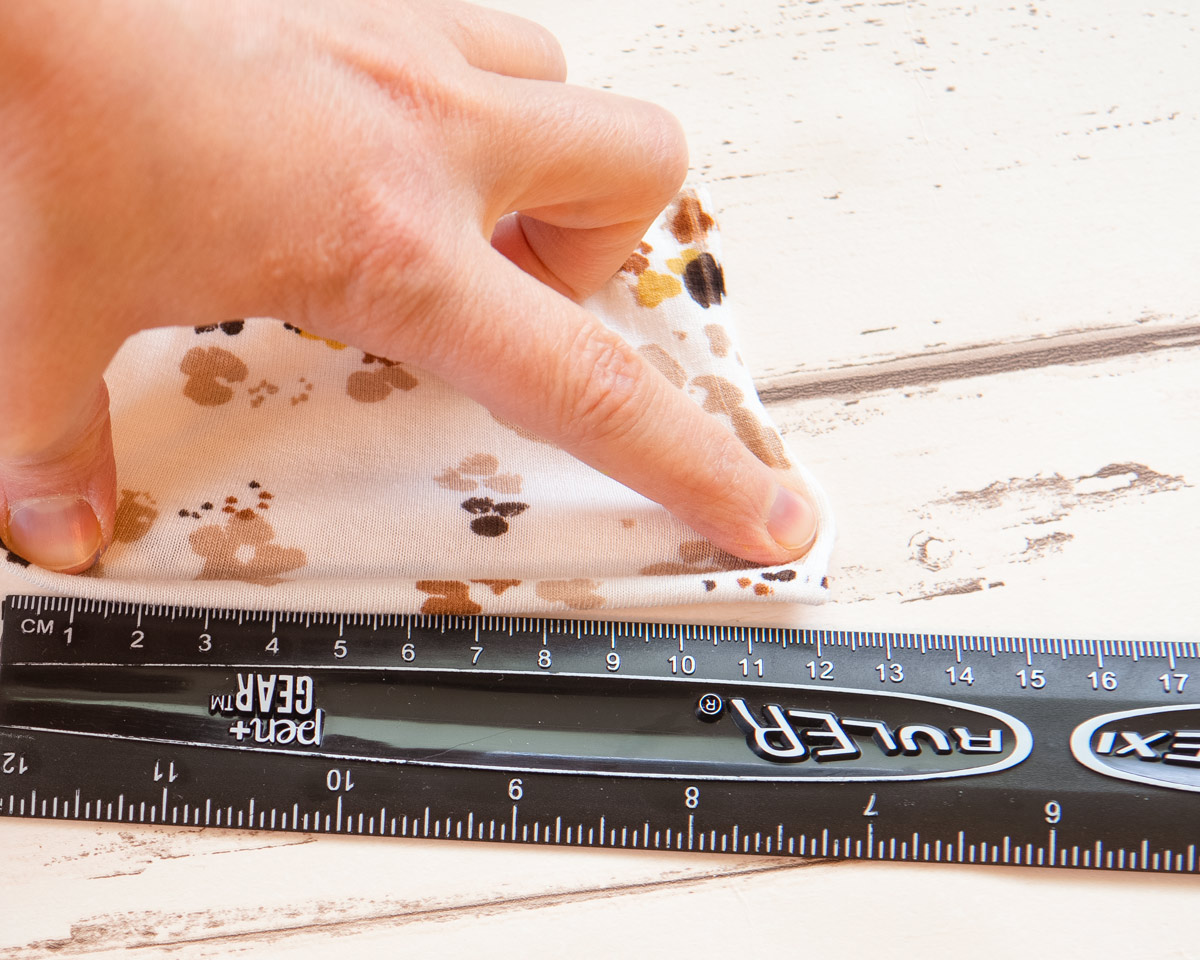
Match the weight of fabric
When you’re mixing knit fabrics together, you also want to pay attention to choose fabrics that are similar in weight. If one fabric is much lighter or heavier than another, they’ll look off somehow or end up fighting each other in the wearing.
A good way to test if your fabrics are similar in weight is to put a scrap of each next to each other. If you can run your hand over them both without sensing a level change, they’re similar enough in weight.
If you have two knits that you really want to put together but one is too lightweight, here’s a simple way to cheat:
Simply back the lighterweight fabric with a piece of your main fabric. Layer them together, then baste the edges and treat the two fabrics as one. This underlining technique will make certain that your lighterweight fabric doesn’t get overwhelmed by the heavier knit.
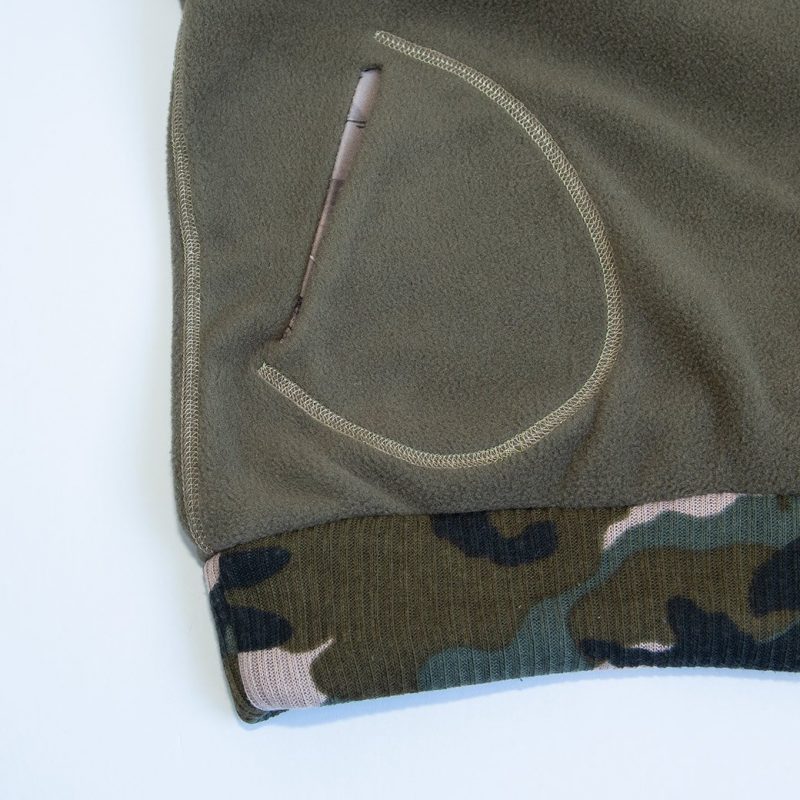
That’s what I did on this hoodie. [insert “rib knit hem”] The rib knit on the cuffs and hem is actually a very thin rayon knit, but the color and pattern were too perfect to not use. To fix it, I cut another piece from my main fabric, basted them together and went on my merry way.
It’s all about the color
Color is probably the first thing you think of when you’re trying to put fabrics together. I put it 3rd on this list though because matching the stretch and weight are more important for the overall structure of the garment you’re making.
After those two things, be sure to pick 2 knits with complementary colors.
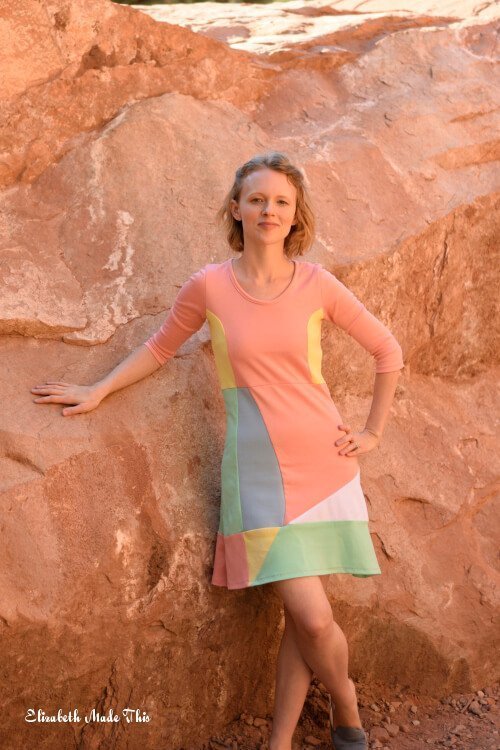
It’s not a bad idea to do a rough sketch of your project and pick where you want to add your different colors. I never approach a colorblocking project without doing this!
Try all the different color combinations you can think of and see which one you like best.
Think about prints
There’s definitely an art to mixing prints. Mixing solids with prints is always a win.
If you want to step up your print mixing game, mix different types of prints like stripes with florals.
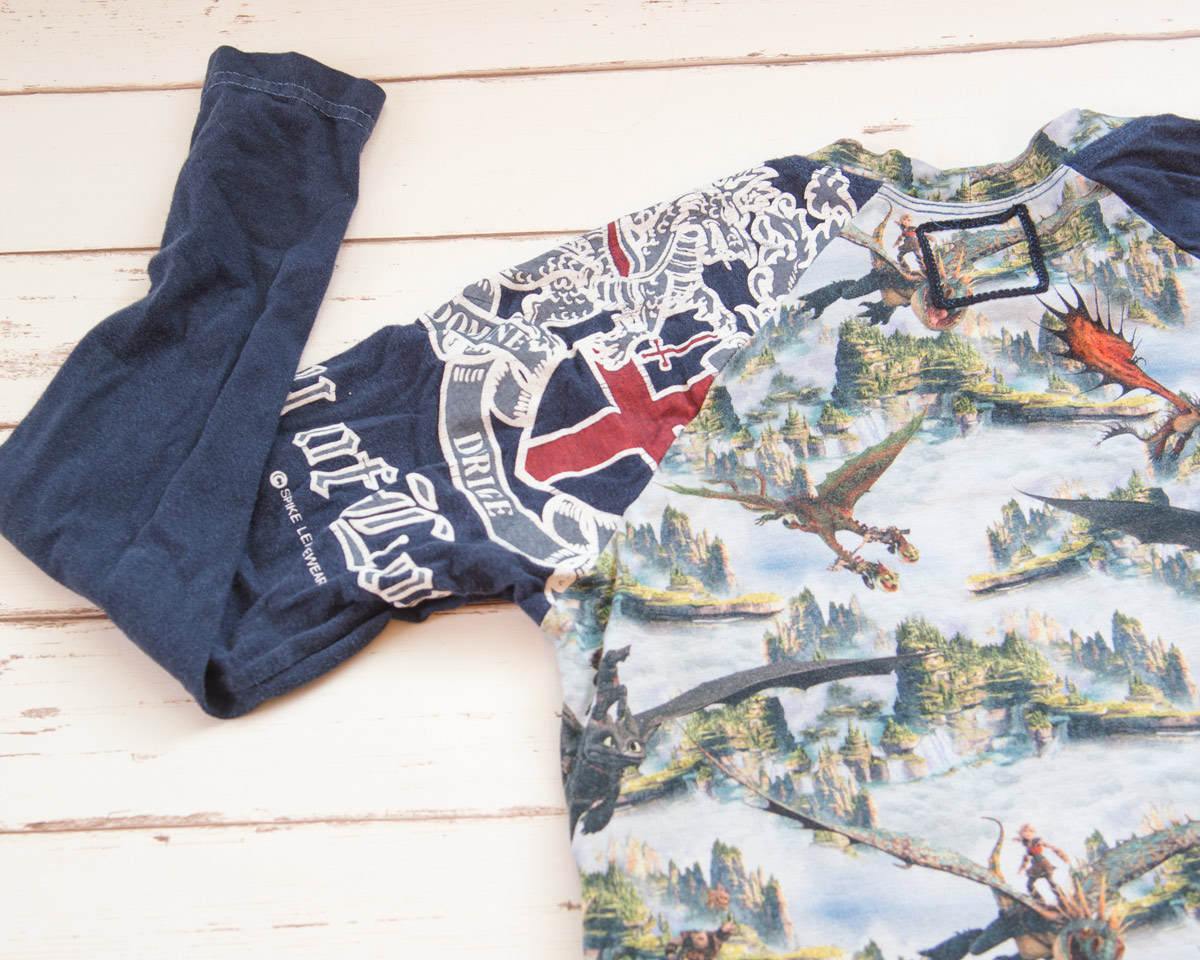
You can go for theme here too in your print mixing. Here with some creative cutting, I upcycled a t-shirt to create sleeves on one of my sons’ pajama tops.
I think that the sleeve makes it look a little like a tattoo which goes well with the How to Train Your Dragon main fabric.
Put your fabrics near each other and see if the tones really complement each other. Sometimes, what seems close at a distance will look just a little off when they’re close together.
You can see here that the seafoam/floral combination is much better than the bold stripe with the mustard abstract print.
If the orange stripe was just a little more mustardy I think it’d work!

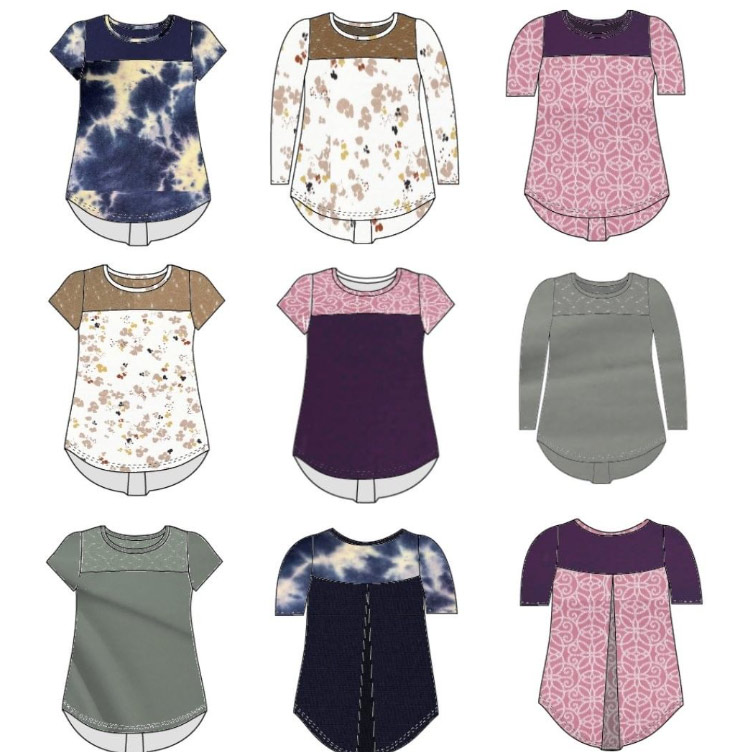
I love this idea from Indie Stitch’s Instagram to digitally mockup your fabric choices.
If you have a photo editing program, this is a simple process. If not, you can always just draw a couple quick sketches of your print mixes. It really doesn’t matter if your drawing skills aren’t that great. Being able to visualize where things are placed with basic shapes and some colored pencils will go a long way in helping you make good design decisions.
Don’t forget about sheers
If you’ve never played with sheer knits before, give it a go. It’s endless fun waiting for you!
Stretch laces, burnout knits and mesh can be a fun way to add some visual texture in your project. They also give you a chance to see how light can reflect differently as the under layer peeks through the sheer fabric.
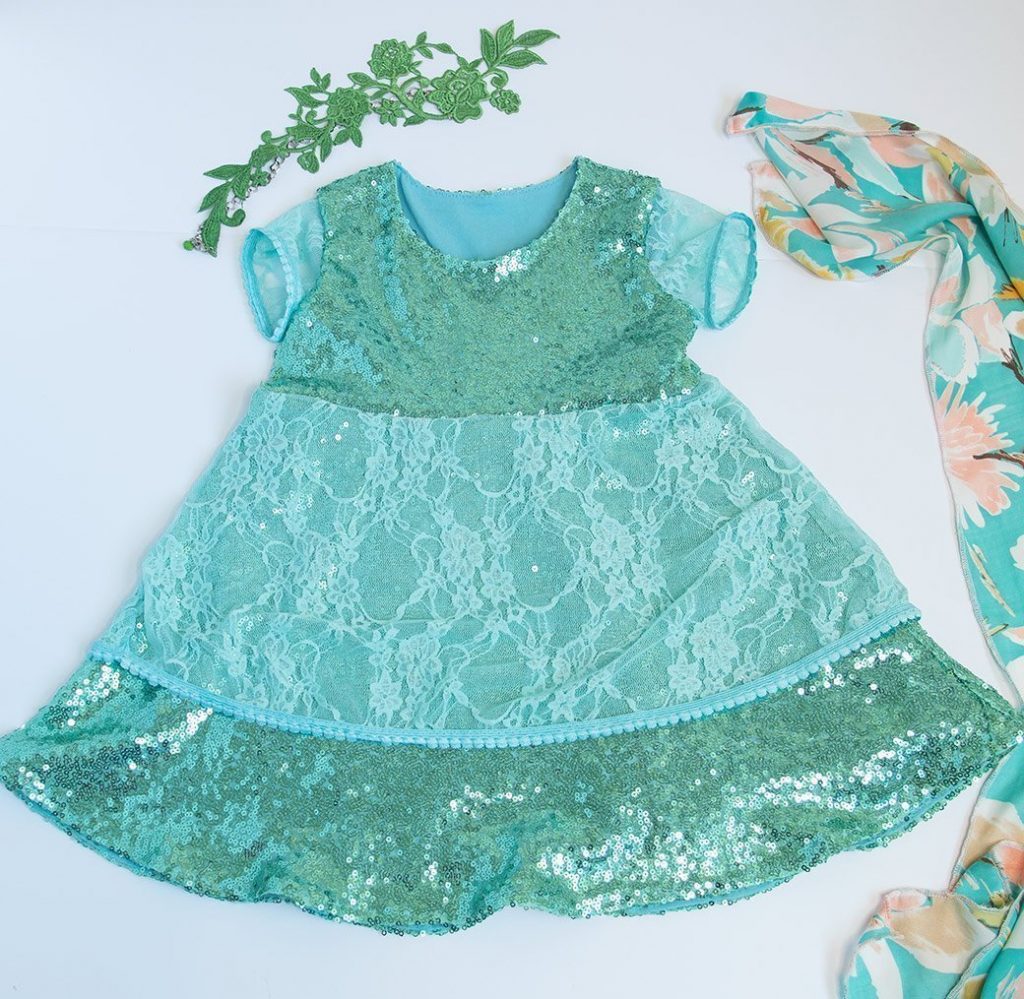
Add another layer of a sheer knit over the top of one of your other pattern pieces, and see how it changes your overall project.
Knit fabric buying tips
When you’re buying fabric in person for a project, lay the two colors on top of each other to see how they look. Step back about 5 feet and squint at them a little bit to see if they pick up weird shadows or reflections next to each other.
If you’re buying fabric online, add every fabric you like to your cart. Open up your cart and see how the fabrics look next to each other. You can use a program like Photoshop or a simple painting program to copy and paste fabric images next to each other. Although it’s true that your computer’s monitor may make fabrics look different online vs. real life, every fabric in any given online fabric shop was photographed under identical lighting conditions. Because of that, you can rest, knowing that two fabrics that look good together online (given they’re from the same store) will also look fabulous together in person.
2 of the easiest foolproof way to make sure your knit fabrics will work together
To finish up, here’s the simplest way you can be certain that your knit fabrics will play nice together:
Simply choose multiple fabrics of the same type. Ponte looks amazing together in a variety of colors as does French terry and sweatshirting.
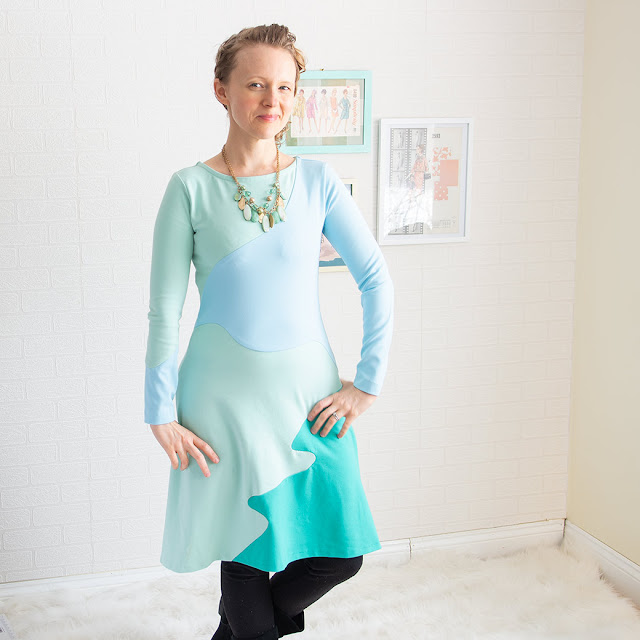
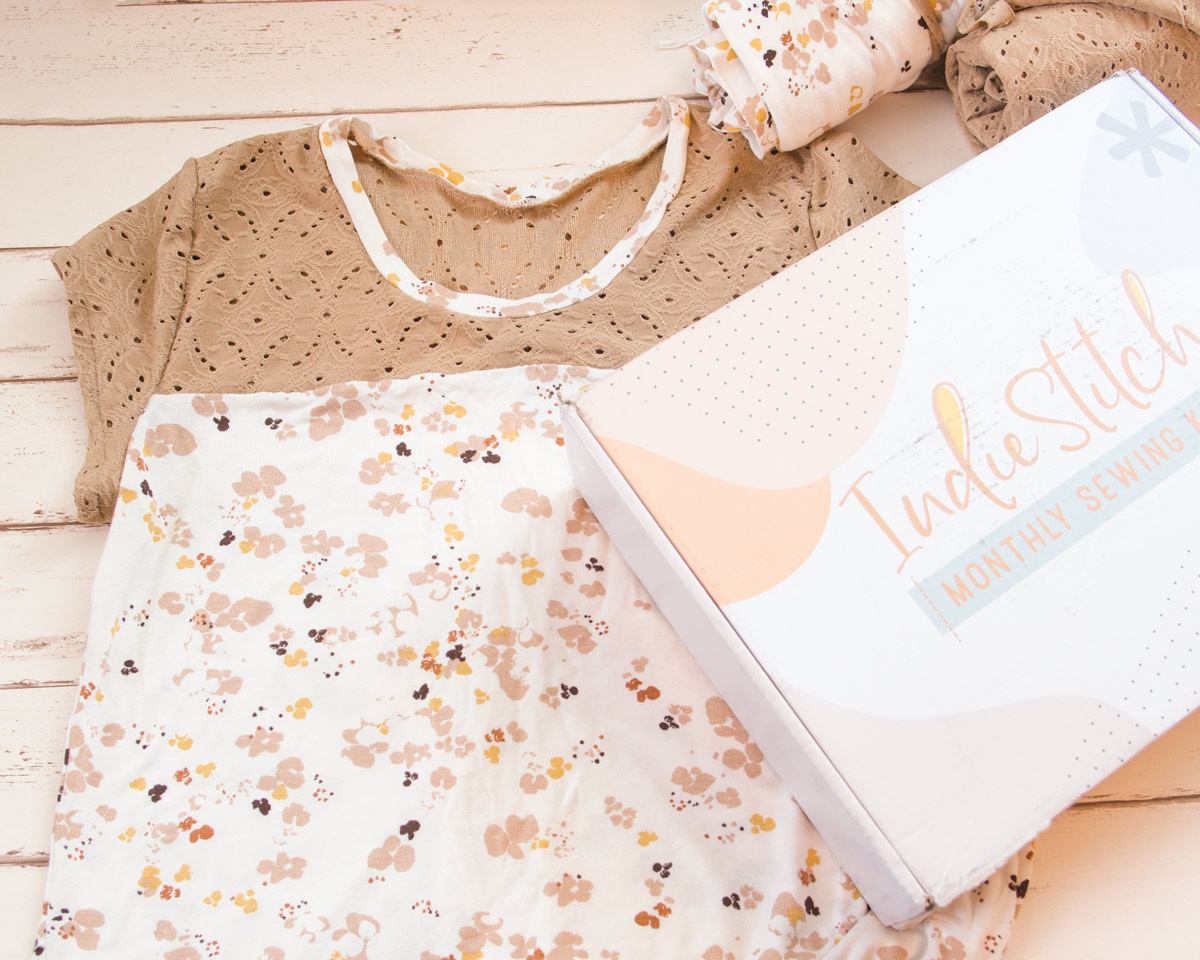
Beyond that, just buy an IndieStitch box! I love that they’ve taken all the guesswork about mixing knits out of it for you by curating beautiful fabrics in every box.
I hope that after this post, you’ll be a little more adventurous in your knit fabric mixing. Have fun playing around with your knit fabrics!
You can find more of my work and all of my sewing tips, step by step sewing tutorials and projects at Elizabeth Made This.
